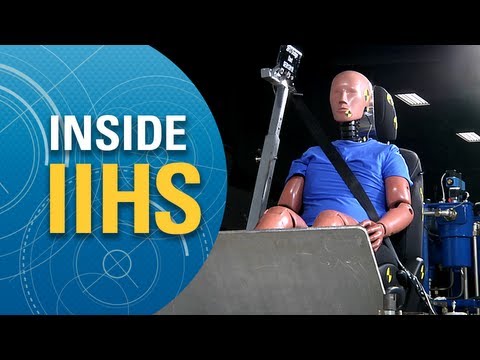9.8: Preventing Injuries
- Page ID
- 17785
Options for Injury prevention
We have learned that some injuries result from large forces between body parts or on the body from other objects. Those forces are associated with large accelerations caused either by interaction with moving objects (cars, soccer balls) or large accelerations generated during locomotion. There are of course injuries caused by large forces in the absence of acceleration, such as crushing injuries, and those types of injuries can be analyzed using concepts of equilibrium, stress, and strain. However, large accelerations are the hallmark of non-equilibrium injuries, such as those discussed in this unit. Therefore, we can prevent non-equilibrium injuries by:
- Increasing the ultimate strength of body tissues so that they can handle larger stress and thus larger force.
- Increasing the cross-sectional area of body parts so that the stress remains below the tissue’s ultimate strength, even for larger forces.
- Decrease the size of accelerations, and thus forces and resulting stress, experienced by the body.
The first two options are controlled by genetics and regular exposure to large, but not injury inducing forces, also known as exercise.[1] The next few chapters will focus on the third option, which is achieved by good choices, thoughtful movement, and technology.
Everyday Example: Headrest
The headrest in your car is not actually designed as a place to rest your head. Its real purpose is to prevent injury. If someone rear-ends your car it will accelerate forward. As a result your body is accelerated forward by normal force and friction from the seat. Your head is also accelerated forward at the same rate by a normal force from the headrest, keeping your head above your shoulders and your neck in a safe position. If the head rest were not there, your head would momentarily remain in place due to inertia as your body moved forward, then suddenly be pulled along with the body as the tissues of the neck became stressed (and strained). The lag in head position compresses the vertebrae and stresses other neck tissues (and gives the impression that the head snapped back). Despite this lag in head position, your head does remain attached to your accelerating body, so the tissues in your neck become tight and provide the force required to accelerate the head, and those forces could cause injury. You can see the importance of the headrest in these crash-test videos:
The headrest doesn’t necessarily reduce the acceleration felt by the head as much as provide the force needed to accelerate the head along with the body, thus reducing the forces between the head and neck.
- Carlson, K. J., & Marchi, D. (2014). Reconstructing Mobility. New York: Springer. doi:10.1007/978-1-4899-7460-0 ↵



